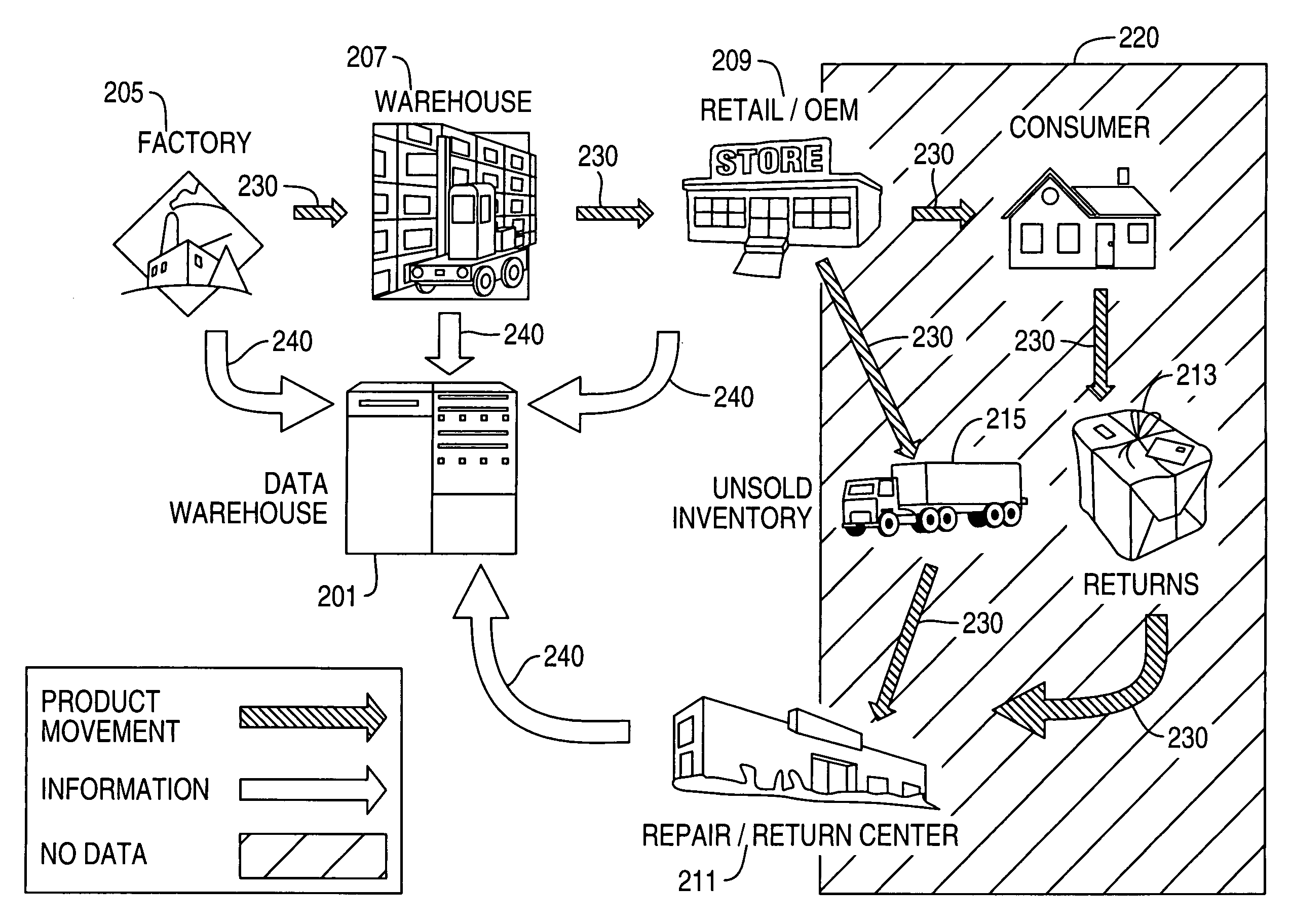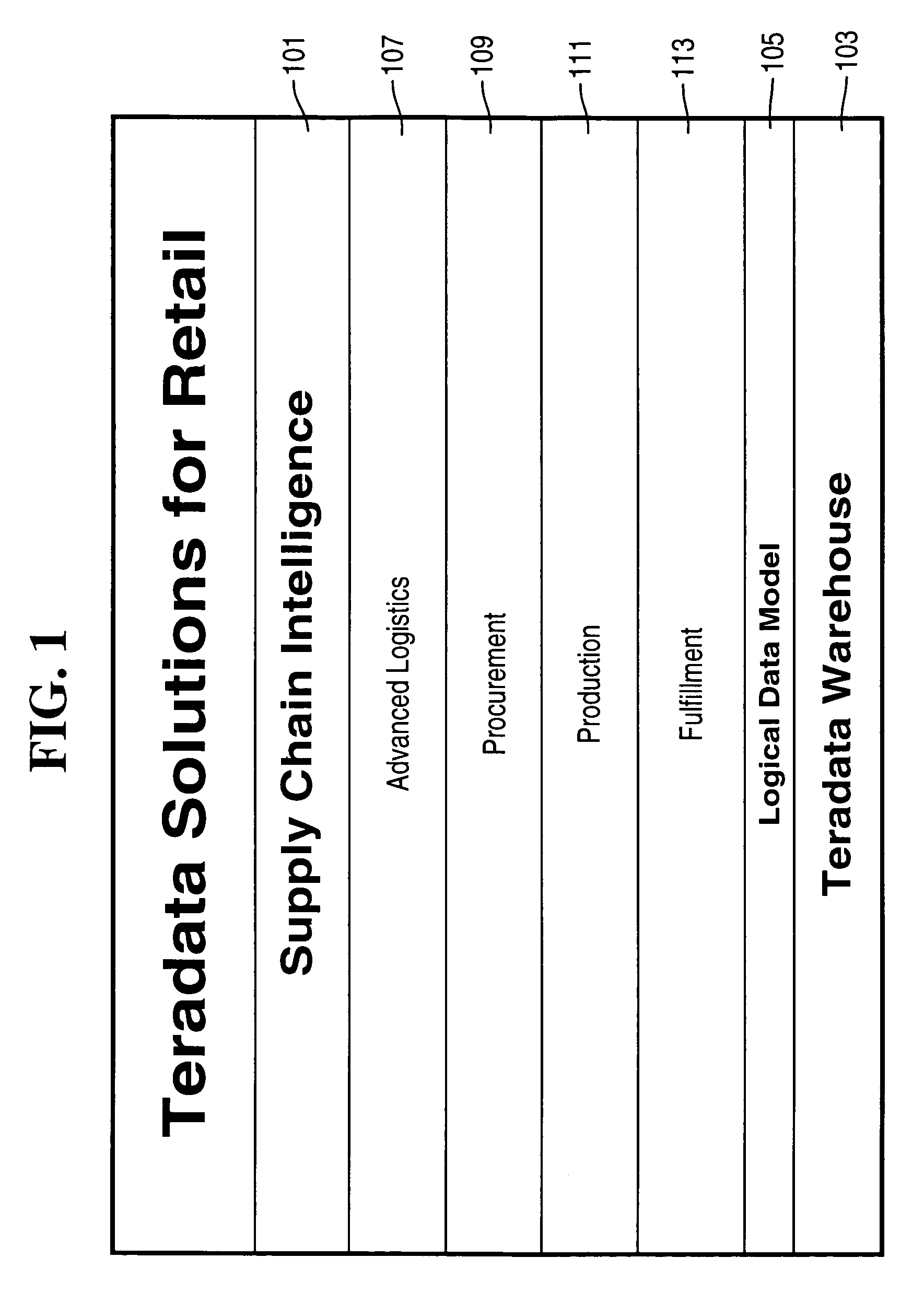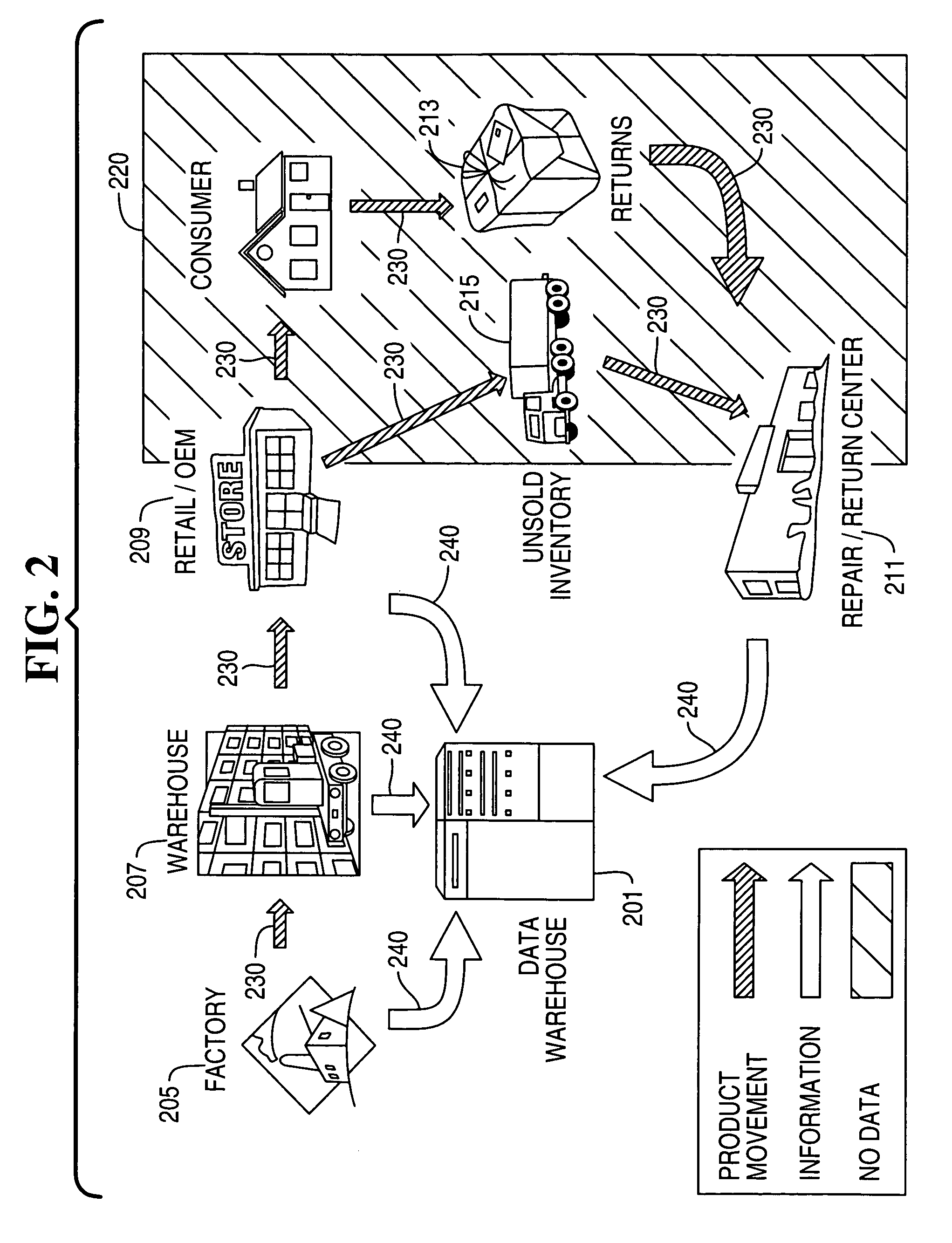System and method for determining sell-through time and inventory aging for retail products
- Summary
- Abstract
- Description
- Claims
- Application Information
AI Technical Summary
Benefits of technology
Problems solved by technology
Method used
Image
Examples
case 1
[0051]The self monitoring product shows no evidence of use (i.e., zero power-ons or zero power-on hours) and the product is saleable (tests good).
[0052]This would be the expected case (no use) for excess and obsolete inventory returned from a retailer or OEM. Using the data warehouse to identify these items and measuring the time between the last delivery and return provides a characterization of shelf time. The histogram of FIG. 3 illustrates the pattern of returns for an example product. Note the batching of returns near day 10, as expected from a retailer. Also note a bimodal distribution characterizing separate sources.
[0053]Evaluation of the data proceeds by observing the range, central values (mean or median) and variability of the distributions. The results in this case represent a worst case shelf life consistent with excess and obsolete inventory. This information can be used to evaluate inventory trends and improve return procedures for different retailers.
[0054]Alternativ...
case 2
[0061]The self monitoring product shows no evidence of use (i.e., zero power-ons or zero power-on hours) and the product is defective.
[0062]For returns from retail centers, in addition to providing sell through time information, returns in this category also imply product abuse, quality or handling issues. These can be correlated with the type of defect observed and evaluated. This category is a good indication of time between delivery and stock as it would be expected that the damage would be noticed prior to offering the product for sale. (As before, the sell through time should be compensated for whether the return originated with the customer or retailer).
[0063]Returns from customers in this category suggest improper installation or abuse by the customer. Again, these returns provide valuable information on sell through times (as previously described) while also identifying possible issues with handling or installation. As these costs are frequently absorbed by manufacturer, an ...
case 3
[0064]The self monitoring product shows small use times (or power-ons) and the product is good.
[0065]In general all returns of this type should have originated with the customer (except for known demo product)—whether the actual returns were made through the retailer / oem or not. Data from this class provides additional verification of sell through time to the final customer.
[0066]This scenario also indicates that the product did not perform up to customer expectations and analysis of the data may provide insight into the reasons.
[0067]Another alternative is fraudulent use. The product could have been used for a short time and returned—essentially equivalent to free rental of the product.
PUM
 Login to View More
Login to View More Abstract
Description
Claims
Application Information
 Login to View More
Login to View More - R&D
- Intellectual Property
- Life Sciences
- Materials
- Tech Scout
- Unparalleled Data Quality
- Higher Quality Content
- 60% Fewer Hallucinations
Browse by: Latest US Patents, China's latest patents, Technical Efficacy Thesaurus, Application Domain, Technology Topic, Popular Technical Reports.
© 2025 PatSnap. All rights reserved.Legal|Privacy policy|Modern Slavery Act Transparency Statement|Sitemap|About US| Contact US: help@patsnap.com



